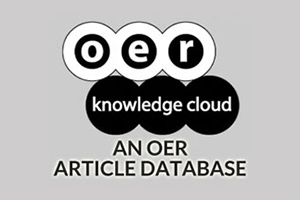Quality Criteria for Online Courses Development
DOI:
https://doi.org/10.19173/irrodl.v26i2.8035Keywords:
guideline, key components of online courses, quality online courses, instructional designAbstract
The rapid growth of online education has brought to the forefront the critical need for designing high-quality online courses that effectively engage learners and facilitate their success in the digital realm. This study explored the key components and practical guidelines for designing high-quality online courses. Qualitative research was conducted through a comprehensive literature review to determine a set of quality guidelines and analysis of existing online courses to assess the application of these guidelines. The study underscored the significance of robust and comprehensive course components in fostering student engagement and learning. It placed particular emphasis on the careful selection and organization of course materials, interactive elements, assessments, and multimedia resources, all of which play a vital role in creating a rich and immersive learning experience. Moreover, in light of the growing number of instructors transitioning to online teaching, the study has provided practical tips and guidelines for instructors. These insights may serve as valuable resources for educators seeking to enhance their instructional design skills and create engaging online learning environments that promote active participation and knowledge retention.
References
Abuhassna, H., & Alnawajha, S. (2023). Instructional design made easy! Instructional design models, categories, frameworks, educational context, and recommendations for future work. European Journal of Investigation in Health, Psychology and Education, 13(4), 715-735. https://doi.org/10.3390/ejihpe13040054
Beach, M. (2018). When great teaching is not enough: Utilizing student perception to increase retention in online learning. In T. Bastiaens, J. Van Braak, M. Brown, L. Cantoni, M. Castro, R. Christensen, G. Davidson-Shivers, K. DePryck, M. Ebner, M. Fominykh, C. Fulford, S. Hatzipanagos, G. Knezek, K. Kreijns, G. Marks, E. Sointu, E. Korsgaard Sorensen, J. Viteli, J. Voogt, P. Weber, E. Weippl & O. Zawacki-Richter (Eds.), Proceedings of EdMedia: World conference on educational media and technology (pp. 1940–1944). Association for the Advancement of Computing in Education (AACE). https://www.learntechlib.org/primary/p/184431/.
Bedir, G. (2022). Teachers’ views on the practices of universal design for learning. International Journal of Curriculum and Instruction, 14(2), 1324–1342. https://eric.ed.gov/?id=EJ1340721
Bergstrom-Lynch, Y., (2019). LibGuides by design: Using instructional design principles and user-centered studies to develop best practices. Public Services Quarterly, 15(3), 205–223. https://bit.ly/4dANhxI
CAST. (2018). Universal design for learning guidelines. http://udlguidelines.cast.org
Boettcher, J. V., & Conrad, R. M. (2021). The online teaching survival guide: Simple and practical pedagogical tips. John Wiley & Sons.
Cuesta, L. (2010). The design and development of online course materials: Some features and recommendations. Profile Issues in Teachers Professional Development, 12(1), 181-201.
Dabbagh, N., Marra, R., & Howland, J. (2019). Meaningful online learning: Integrating strategies, activities, and learning technologies for effective designs. Routledge
EDUCAUSE. (2021). 2021 EDUCAUSE horizon report: Teaching and learning edition. https://www.educause.edu/horizon-report-teaching-and-learning-2021
Gilbert, L., & Moore, D. R. (1998). Building interactivity into Web courses: Tools for social and instructional interactions. Educational Technology, 38(3), 29–35. https://bit.ly/4bipeSL
Gunder, A., Vignare, K., Adams, S., McGuire, A., & Rafferty, J. P. (2021). Optimizing high-quality digital learning experiences: A playbook for faculty. Online Learning Consortium. https://www.everylearnereverywhere.org/resources/
Hamilton, I. (2023, May 24). By the numbers: The rise of online learning in the US. Forbes Advisor. https://bit.ly/3TTfTei
Jones, P., & Davis, R. (2008). Instructional design methods integrating instructional technology. In T. T. Kidd & H. Song (Eds.), Handbook of research on instructional systems and technology (pp. 15–27). IGI Global. https://bit.ly/4dEZ3al
Kent State Online. (2023). Online course design best practices checklists. Retrieved November 3, 2023 from https://www.kent.edu/onlineteaching/checklists
Kumar, S., Martin, F., Budhrani, K., & Ritzhaupt, A. (2019). Award-winning faculty online teaching practices: Elements of award-winning courses. Online Learning, 23(4), 160–180. https://doi.org/10.24059/olj.v23i4.2077
McGahan, S. J., Jackson, C. M., & Premer, K. (2015). Online course quality assurance: Development of a quality checklist. InSight: A Journal of Scholarly Teaching, 10, 126-140. https://bit.ly/4bhNoN6
Nichols Hess, A., & Greer, K. (2016). Designing for engagement: Using the ADDIE model to integrate high-impact practices into an online information literacy course. Communications in Information Literacy, 10(2), 6. https://bit.ly/4atIoDU
Nieves, L. H., Moya, E. C., & Soldado, R. M. (2019). A MOOC on universal design for learning designed based on the UDL paradigm. Australasian Journal of Educational Technology, 35(6), 30–47. https://bit.ly/3wHe4I7
Ní Shé, C., Farrell, O., Brunton, J., & Costello, E. (2021). Integrating design thinking into instructional design: The #OpenTeach case study. Australasian Journal of Educational Technology, 38(1), 33–52. https://doi.org/10.14742/ajet.6667
O'Keefe, L., Rafferty, J., Gunder, A., & Vignare, K. (2020). Delivering high-quality instruction online in response to COVID-19: Faculty playbook. Online Learning Consortium. https://eric.ed.gov/?id=ED605351
Shattuck, K. (2015). Focusing research on quality matters. American Journal of Distance Education, 29(3), 155-158. https://doi.org/10.1080/08923647.2015.1061809
University of Toronto. (2023). Online course design guidelines. https://teaching.utoronto.ca/resources/online-course-design-guidelines/
Wiggins, G., & McTighe, J. (2005). Understanding by design. Pearson Education.
Xu, D., Li, Q., & Zhou, X. (2020). Online course quality rubric: A tool box. Online Learning Research Center. https://par.nsf.gov/servlets/purl/10232436
Zimmerman, W., Altman, B., Simunich, B., Shattuck, K., & Burch, B. (2020). Evaluating online course quality: A study on implementation of course quality standards. Online Learning, 24(4), 147-163. https://doi.org/10.24059/olj.v24i4.2325
Published
How to Cite
Issue
Section
License

This work is licensed under a Creative Commons Attribution 4.0 International License.
This work is licensed under a Creative Commons Attribution 4.0 International License. The copyright for all content published in IRRODL remains with the authors.
This copyright agreement and usage license ensure that the article is distributed as widely as possible and can be included in any scientific or scholarly archive.
You are free to
- Share — copy and redistribute the material in any medium or format
- Adapt — remix, transform, and build upon the material for any purpose, even commercially.
The licensor cannot revoke these freedoms as long as you follow the license terms below:
- Attribution — You must give appropriate credit, provide a link to the license, and indicate if changes were made. You may do so in any reasonable manner, but not in any way that suggests the licensor endorses you or your use.
- No additional restrictions — You may not apply legal terms or technological measures that legally restrict others from doing anything the license permits.







